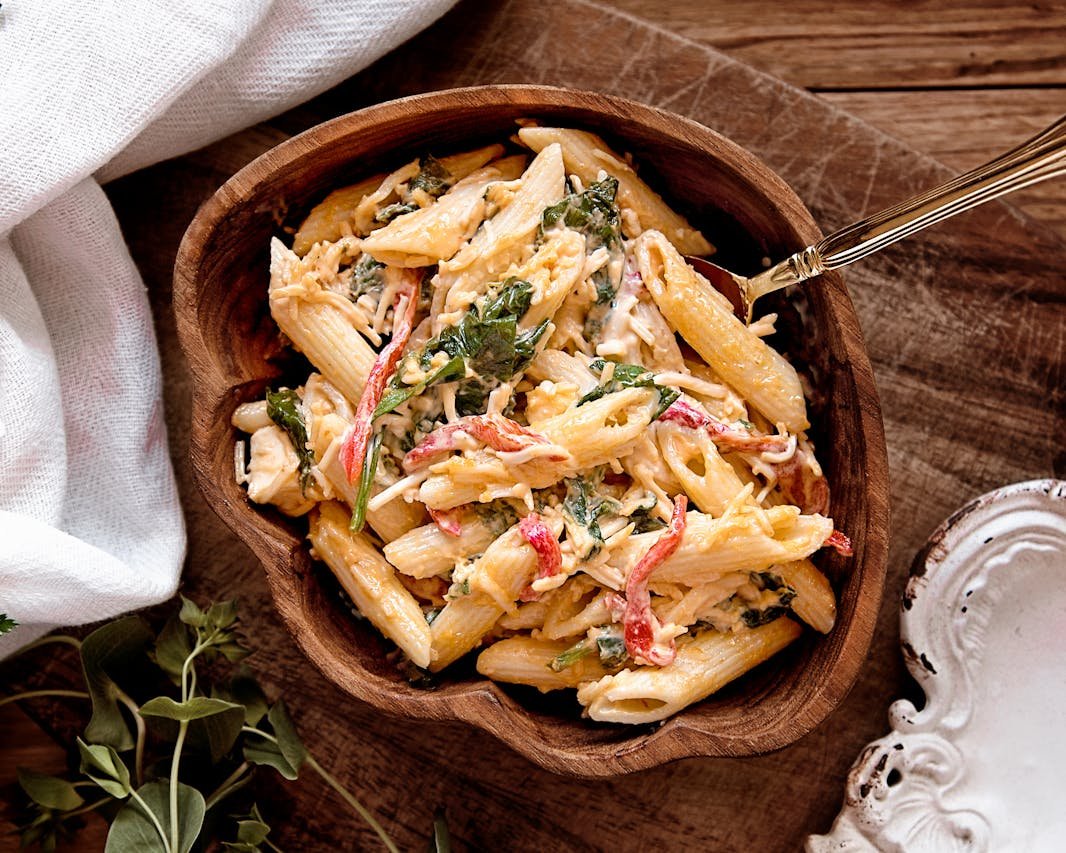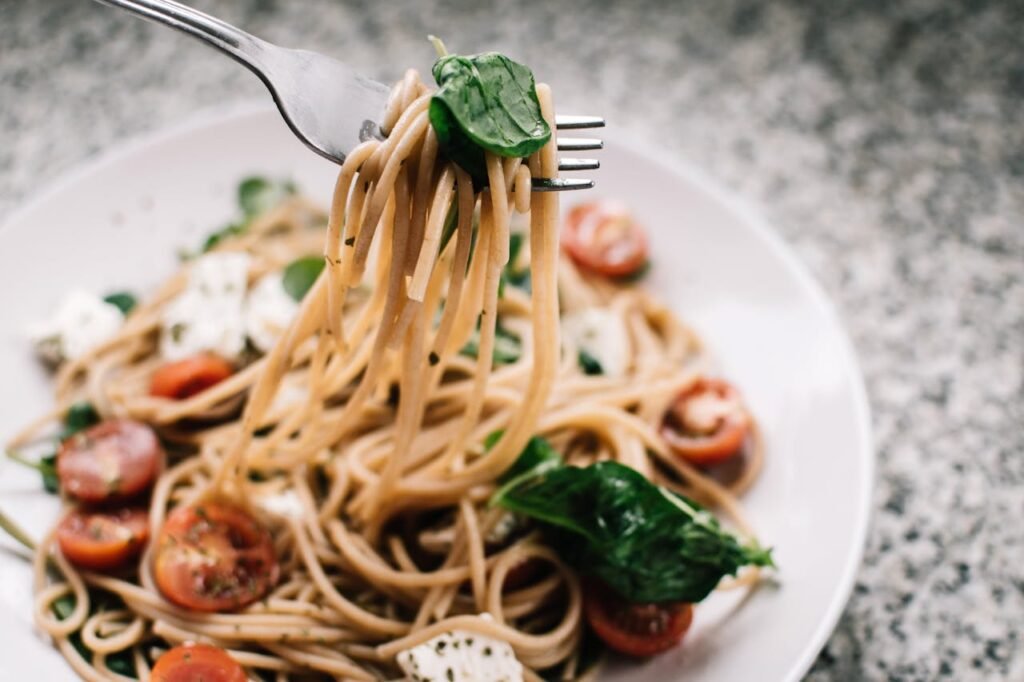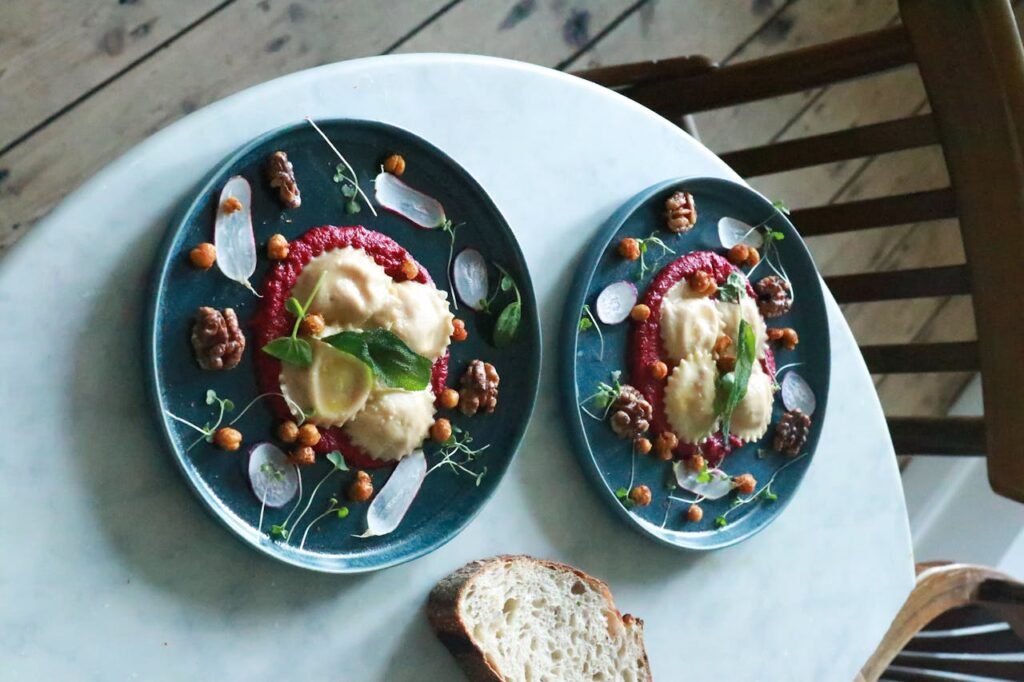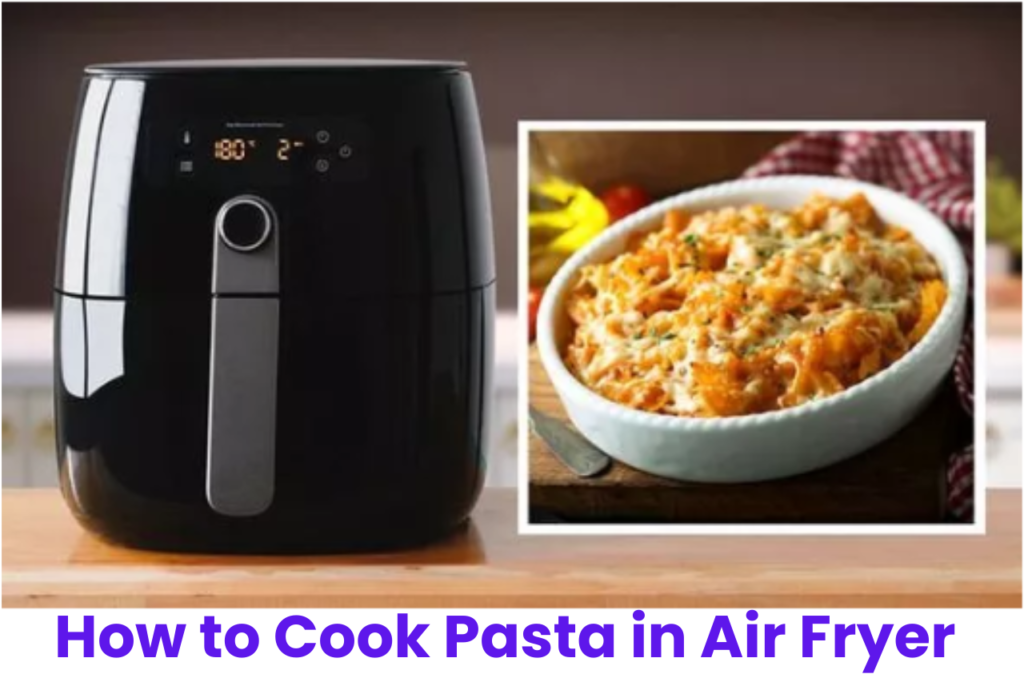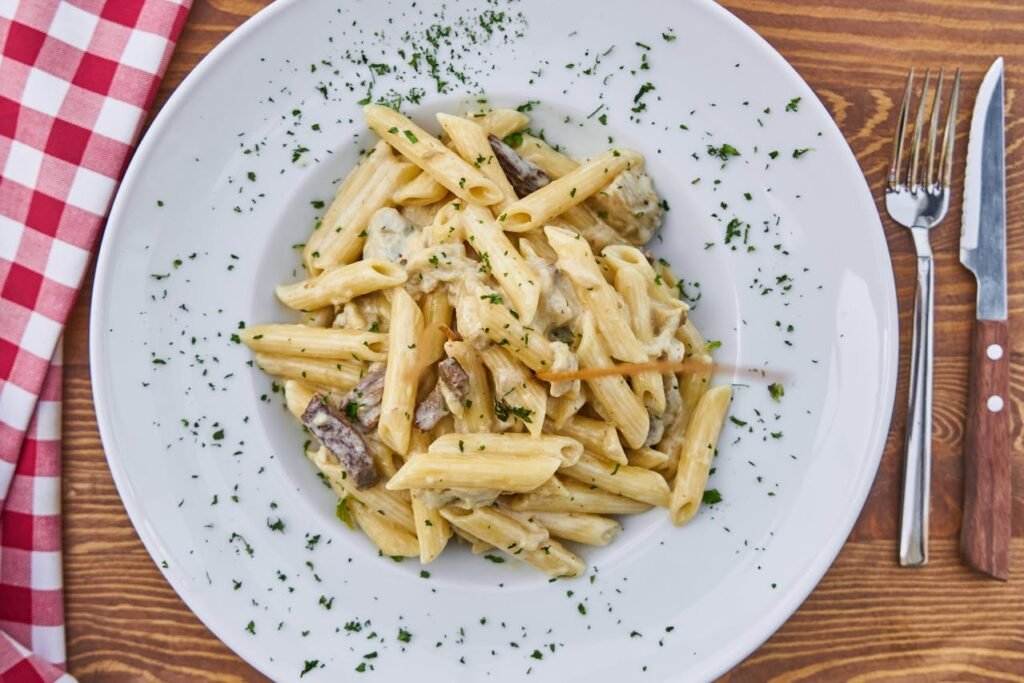Cooking pasta is a beloved culinary tradition that brings comfort and satisfaction to countless meals. However, what if you find yourself without a stove or microwave? Whether you’re in a dorm room, camping outdoors, or facing kitchen renovations, it’s still possible to enjoy a delicious bowl of pasta using alternative methods. This article explores inventive techniques how to cook pasta without stove, offering solutions for various situations where traditional cooking appliances are unavailable.
The Challenge of Cooking Pasta Without a Stove
Pasta is typically cooked by boiling in water, a process that requires direct heat from a stove. When access to a stove or microwave is limited, finding creative ways to cook pasta becomes essential. Fortunately, there are alternative cooking methods that can achieve satisfying results, from utilizing electric kettles and slow cookers to leveraging outdoor campfires or rice cookers. Each method offers a unique approach to pasta preparation, demonstrating the versatility of this beloved dish.
Key Benefits of Alternative Pasta Cooking Methods
Embracing alternative pasta cooking methods presents several advantages:
- Versatility: These methods enable pasta cooking in diverse settings, including camping trips, college dorms, or during kitchen renovations.
- Convenience: By using alternative appliances like electric kettles or slow cookers, pasta cooking becomes accessible and straightforward.
- Resourcefulness: Discovering new ways to cook pasta without a stove fosters resourcefulness and enhances culinary creativity.
What to Expect in This Article
In this comprehensive guide, we’ll delve into a range of innovative techniques for cooking pasta without a stove. Each method will be explored step-by-step, offering detailed instructions, tips, and considerations for successful pasta preparation. Whether you’re seeking a quick solution using an electric kettle or planning a rustic campfire dinner, this article will equip you with the knowledge to satisfy your pasta cravings anytime, anywhere.
Let’s dive into these creative methods and discover how to cook pasta without traditional cooking appliances, embracing ingenuity and culinary exploration along the way.
Methods for Cooking Pasta Without a Stove
Cooking pasta without a stove requires resourcefulness and the willingness to explore alternative cooking methods. Here are several effective techniques to prepare pasta even when traditional kitchen appliances are unavailable:
1. Using an Electric Kettle
An electric kettle can be a lifesaver when it comes to cooking pasta without a stove. Follow these steps:
- Boil Water: Fill the electric kettle with water and heat it until it reaches a rolling boil.
- Add Pasta: Transfer the boiling water to a heat-resistant bowl or container and add the pasta.
- Cover and Cook: Cover the bowl/container with a lid or foil and let the pasta cook for the recommended time until al dente.
- Drain and Serve: Carefully drain the cooked pasta using a colander or strainer, then toss with your favorite sauce.
Tips: Ensure the electric kettle is large enough to hold sufficient water for cooking the pasta. Monitor the cooking time closely to achieve the desired texture.
2. Utilizing a Slow Cooker
A slow cooker offers a convenient way to cook pasta without a stove. Here’s how:
- Add Ingredients: Place water and pasta in the slow cooker, ensuring the pasta is fully submerged.
- Set to High: Cook the pasta on the highest heat setting for 2-3 hours or until tender.
- Check Doneness: Test the pasta for doneness, adjusting the cooking time if needed.
- Serve: Drain the cooked pasta and serve with your preferred sauce or toppings.
Tips: Stir occasionally to prevent the pasta from sticking. Adjust the cooking time based on the type of pasta and desired texture.
3. Using a Microwave
A microwave is a quick and efficient method for cooking pasta without a stove. Follow these steps:
- Prepare Pasta: Place pasta in a microwave-safe bowl and cover with water.
- Microwave: Heat the pasta on high for several minutes, pausing to stir halfway through.
- Check Texture: Test the pasta for doneness and microwave further if needed.
- Drain and Serve: Once cooked, drain the pasta and pair with your favorite sauce or seasonings.
Additional Methods for Cooking Pasta Without a Stove
In addition to the methods discussed earlier, there are several more creative ways to cook pasta without the use of a traditional stove. These methods offer flexibility and can be adapted based on available resources and preferences:
4. Using a Camping Stove
If you have access to a portable camping stove, you can cook pasta outdoors or in any well-ventilated area. Here’s how:
- Set Up the Stove: Follow the manufacturer’s instructions to set up the camping stove safely.
- Boil Water: Place a pot or pan on the camping stove and heat water until it reaches a rolling boil.
- Cook the Pasta: Add the pasta to the boiling water and cook according to package instructions.
- Drain and Serve: Once cooked, drain the pasta and combine with your preferred sauce or toppings.
Tips: Ensure proper ventilation when using a camping stove indoors. Use heat-resistant cookware suitable for outdoor cooking.
5. Using a Rice Cooker
Surprisingly, a rice cooker can also be used to cook pasta efficiently. Here’s how:
- Add Pasta and Water: Place pasta in the rice cooker pot and cover with water, ensuring the pasta is fully submerged.
- Set to Cook: Start the rice cooker and allow the pasta to cook until tender.
- Check Doneness: Test the pasta for desired texture and adjust cooking time if necessary.
- Serve: Drain the cooked pasta and serve with sauce or seasonings.
Tips: Monitor the rice cooker during cooking to prevent water from boiling over. Adjust water levels based on the amount of pasta being cooked.
6. Using a Thermos
A thermos can be an unconventional yet effective tool for cooking pasta without a stove. Here’s how:
- Boil Water: Heat water separately in a kettle or pot until boiling.
- Combine with Pasta: Place raw pasta in a thermos and pour the boiling water over it.
- Seal and Wait: Close the thermos tightly and allow the pasta to cook for several minutes.
- Serve: Drain the cooked pasta directly from the thermos and enjoy with sauce or toppings.
Tips: Use a high-quality thermos that can retain heat effectively. Experiment with pasta shapes and cooking times based on personal preference.
Cooking Pasta Without a Stove: Safety Precautions and Considerations
When using alternative methods to cook pasta without a stove, it’s important to prioritize safety and consider specific factors to ensure a successful cooking experience. Here are essential safety precautions and considerations to keep in mind:
1. Proper Ventilation
- Indoor Cooking: If using alternative cooking methods indoors, ensure adequate ventilation to prevent the buildup of steam or smoke. Open windows or doors to maintain air circulation.
- Outdoor Cooking: When cooking outdoors, choose a well-ventilated area away from flammable materials or structures. Avoid enclosed spaces to prevent carbon monoxide buildup.
2. Monitoring Cooking Process
- Attention to Water Levels: Regularly monitor water levels when cooking pasta with alternative methods. Insufficient water can lead to burning or uneven cooking.
- Check Pasta Texture: Test the pasta regularly to prevent overcooking or undercooking. Follow package instructions or adjust cooking times based on personal preference.
3. Handling Hot Surfaces and Equipment
- Use Heat-Resistant Tools: When cooking over open flames or with portable stoves, use heat-resistant utensils and cookware to prevent burns or melting.
- Safe Equipment Placement: Place cooking equipment on stable surfaces to prevent accidental spills or tipping.
4. Food Safety
- Avoid Cross-Contamination: Keep raw and cooked pasta separate to avoid cross-contamination. Use clean utensils and surfaces when handling cooked pasta.
- Proper Storage: Store cooked pasta properly in sealed containers in the refrigerator to maintain freshness and prevent spoilage.
5. Fire Safety
- Extinguishing Flames: Keep a fire extinguisher or other fire suppression equipment nearby when cooking with alternative methods. Be prepared to extinguish small fires if necessary.
- Follow Local Regulations: Adhere to local fire safety regulations and guidelines when cooking outdoors or using alternative cooking methods.
6. Handling Hot Water
- Caution with Boiling Water: Be cautious when handling boiling water to prevent scalding. Use heat-resistant gloves or utensils to avoid burns.
Tips and Tricks for Cooking Pasta Without a Stove
Cooking pasta without a traditional stove opens up a world of creative possibilities. Here are some expert tips and tricks to help you master the art of cooking pasta using alternative methods:
1. Choose the Right Pasta
- Consider Pasta Shape: Opt for quick-cooking pasta shapes like spaghetti, angel hair, or penne when using alternative cooking methods. They cook more evenly and quickly.
- Use Thin Noodles: Thin noodles, such as vermicelli or capellini, tend to cook faster and more evenly compared to thicker varieties.
2. Preparation Techniques
- Break Long Pasta: If using a microwave or kettle, break long pasta into smaller pieces to ensure even cooking and easy handling.
- Pre-Soak Hard Pasta: For denser pasta varieties like whole wheat or brown rice pasta, consider pre-soaking them in warm water to reduce cooking time.
3. Water Management
- Monitor Water Levels: Maintain sufficient water levels when cooking pasta using alternative methods. Add boiling water as needed to ensure pasta is fully submerged.
- Reuse Pasta Water: Save some of the cooking water to adjust the consistency of sauces or to prevent pasta from sticking together when serving.
4. Seasoning and Flavoring
- Add Flavor to Water: Enhance the taste of pasta by seasoning the cooking water with salt, herbs, or a splash of olive oil.
- Infuse with Broth: Cook pasta in broth instead of water for added flavor and richness.
5. Covering Techniques
- Use a Lid or Foil: Cover the cooking vessel with a lid or aluminum foil to trap heat and cook the pasta more efficiently.
- Let It Rest: Allow pasta to rest in hot water after cooking to absorb flavors and reach the desired texture.
6. Stirring and Tossing
- Stir Frequently: Stir pasta occasionally during cooking to prevent sticking and ensure even cooking.
- Toss with Sauce: Toss cooked pasta immediately with your favorite sauce or ingredients while it’s still warm to enhance flavor absorption.
7. Experiment with Cooking Appliances
- Explore Slow Cooking: Experiment with using a slow cooker or crockpot to cook pasta slowly for a flavorful result.
- Try Electric Kettles: Utilize electric kettles for quick and efficient boiling of water to cook pasta.
8. Optimize Cooking Times
- Follow Package Instructions: Refer to package instructions for cooking times and adjust based on your preferred level of doneness.
- Test for Doneness: Taste-test pasta frequently to achieve the desired texture without overcooking.
9. Be Resourceful
- Utilize Camping Gear: If outdoors, leverage portable camping stoves or fire pits to cook pasta while enjoying the great outdoors.
- Rethink Kitchen Appliances: Explore alternative kitchen appliances like rice cookers or panini presses for innovative pasta cooking methods.
Common Mistakes to Avoid When Cooking Pasta Without a Stove
While cooking pasta without a stove can be a convenient alternative, it’s essential to avoid common pitfalls to ensure a satisfying outcome. Here are some common mistakes to steer clear of when cooking pasta using alternative methods:
1. Insufficient Water
One of the most critical factors in cooking pasta is ensuring there’s enough water to fully submerge the noodles. Insufficient water can lead to uneven cooking and potentially sticky or clumpy pasta.
2. Undercooking or Overcooking
Without precise temperature control, it’s easy to undercook or overcook pasta. Test the pasta frequently to achieve the perfect al dente texture, avoiding mushy or overly firm noodles.
3. Not Monitoring Water Levels
When using alternative cooking methods like a microwave or electric kettle, it’s important to monitor water levels continuously. Add boiling water as needed to keep the pasta submerged.
4. Neglecting Seasoning
Don’t forget to season the cooking water with salt. This not only enhances the pasta’s flavor but also helps ensure proper cooking.
5. Skipping Stirring
Stirring pasta during the cooking process helps prevent sticking and ensures even cooking. Neglecting to stir can result in clumpy or unevenly cooked noodles.
6. Overcrowding the Cooking Vessel
Avoid overcrowding the cooking vessel, especially when using alternative appliances like electric kettles or slow cookers. Cook pasta in batches if necessary to ensure proper cooking.
7. Draining Excess Water
When draining cooked pasta, reserve some of the pasta water for adjusting sauce consistency. Avoid draining pasta completely dry, as a bit of pasta water can help bind sauces.
8. Using the Wrong Pasta Type
Choose pasta shapes that cook quickly and evenly when using alternative cooking methods. Long, thick pasta varieties may not cook uniformly without traditional stovetop boiling.
9. Ignoring Resting Time
Allow cooked pasta to rest briefly before serving to absorb flavors and achieve optimal texture. This step is crucial for ensuring well-cooked and flavorful pasta dishes.
10. Not Adapting Cooking Techniques
Different alternative cooking methods require specific adaptations. Take time to experiment and adjust techniques based on the appliance and pasta type used.
By avoiding these common mistakes, you’ll enhance your ability to cook pasta successfully without a stove.
Tips for Cooking Perfect Pasta Without a Stove
Cooking pasta without a stove requires some creativity and attention to detail. Here are some expert tips to ensure you achieve perfectly cooked pasta using alternative methods:
1. Use Sufficient Water
Ensure that there is enough boiling water to fully submerge the pasta. The ratio typically used is around 4-6 quarts of water per pound of pasta. This ensures even cooking and prevents sticking.
2. Add Salt to the Water
Season the boiling water generously with salt before adding the pasta. This enhances the pasta’s flavor from the inside out.
3. Choose the Right Pasta Type
Opt for pasta shapes that cook quickly and evenly. Thin or small pasta shapes like angel hair, penne, or fusilli work well with alternative cooking methods.
4. Stir the Pasta
Regularly stir the pasta while it cooks to prevent sticking and ensure even cooking. Use a fork or spoon to gently separate the strands.
5. Test for Doneness
Regularly test the pasta for doneness by tasting a strand. Pasta should be cooked al dente, meaning it should be tender but still slightly firm to the bite.
6. Reserve Pasta Water
Before draining the pasta, reserve a cup of the cooking water. This starchy water can be used to adjust the consistency of sauces or help bind ingredients together.
7. Toss with Sauce Immediately
Once drained, toss the pasta immediately with your desired sauce to prevent it from sticking together. The residual heat will help the sauce adhere to the pasta.
8. Allow Resting Time
Let the pasta rest for a minute or two after cooking to absorb the flavors of the sauce and achieve the perfect texture.
9. Experiment with Flavors
Get creative with your pasta dishes by experimenting with different sauces, herbs, and toppings. The versatility of pasta allows for endless flavor combinations.
10. Adjust Cooking Techniques
Adapt your cooking techniques based on the alternative method you’re using. For example, if using a microwave, cover the pasta to retain heat and moisture.
By following these expert tips, you’ll be able to cook pasta without a stove like a pro. Each tip contributes to the overall success of your pasta dish, ensuring it’s flavorful and perfectly cooked.
Recipe Ideas for Cooking Pasta Without a Stove
Cooking pasta without a stove opens up opportunities to explore creative and flavorful recipes. Here are some delicious recipe ideas that you can try using alternative cooking methods:
1. Cold Pasta Salad
Create a refreshing cold pasta salad using pasta shapes like fusilli or penne. Cook the pasta using the microwave or kettle method, then chill it in the refrigerator. Toss the chilled pasta with fresh vegetables, herbs, olive oil, vinegar, and seasonings of your choice to create a satisfying pasta salad.
2. Pasta Aglio e Olio
Prepare a classic Italian dish, Pasta Aglio e Olio, without a stove. Cook spaghetti using the microwave or kettle method, then toss it with sautéed garlic, red pepper flakes, olive oil, and fresh parsley. This simple yet flavorful dish is ready in minutes and requires minimal cooking.
3. Pasta with Pesto Sauce
Cook pasta using alternative methods and toss it with homemade or store-bought pesto sauce. Pesto, made from fresh basil, pine nuts, Parmesan cheese, garlic, and olive oil, adds vibrant flavor to the pasta without the need for extensive cooking.
4. Asian-style Stir-Fried Noodles
Prepare Asian-inspired stir-fried noodles using ramen or rice noodles. Soak the noodles in hot water until softened, then stir-fry them with vegetables, protein (like tofu or shrimp), soy sauce, sesame oil, and seasonings. Customize the stir-fry with your favorite ingredients for a delicious meal.
5. Pasta Primavera
Create a colorful Pasta Primavera using alternative cooking methods. Cook pasta until al dente using available resources, then toss it with sautéed spring vegetables such as bell peppers, zucchini, cherry tomatoes, and peas. Finish with a light cream sauce or lemony dressing.
6. Creamy Mushroom Pasta
Prepare a creamy mushroom pasta without a stove. Soak or cook pasta using alternative methods, then combine it with a creamy mushroom sauce made with sautéed mushrooms, garlic, cream, Parmesan cheese, and herbs. This comforting dish is rich in flavor and texture.
7. Mediterranean-style Pasta
Craft a Mediterranean-inspired pasta dish with flavors of sun-dried tomatoes, olives, capers, and feta cheese. Cook pasta using available methods, then toss it with the Mediterranean ingredients along with olive oil, lemon juice, and fresh herbs for a burst of Mediterranean flavors.
8. Spicy Arrabbiata Pasta
Prepare a spicy Arrabbiata pasta sauce using canned tomatoes, garlic, chili flakes, and olive oil. Cook pasta using alternative methods, then toss it with the Arrabbiata sauce for a bold and fiery pasta dish.
9. Pasta with Marinara Sauce
Create a classic pasta dish with marinara sauce using canned tomatoes, garlic, onions, and Italian herbs. Cook pasta using alternative methods, then simmer it briefly in the marinara sauce to infuse flavors before serving.
10. Simple Olive Oil and Garlic Pasta
Make a quick and easy olive oil and garlic pasta by cooking spaghetti or linguine using alternative methods, then tossing it with a generous amount of olive oil, minced garlic, salt, and pepper. Garnish with fresh parsley and grated Parmesan cheese for a simple yet satisfying meal.
These recipe ideas demonstrate the versatility of cooking pasta without a stove. Experiment with different flavors, ingredients, and techniques to create delicious pasta dishes using the resources available to you. Enjoy the process of cooking pasta creatively and without traditional kitchen appliances.
Conclusion: How to Cook Pasta Without A Stove
Cooking pasta without a stove opens up a world of possibilities, allowing you to enjoy delicious pasta dishes even without traditional cooking appliances. Whether you’re camping outdoors, in a dorm room, or simply looking for creative cooking methods, these alternatives empower you to satisfy your pasta cravings with ingenuity.
In this article, we’ve explored various methods and recipe ideas for cooking pasta without a stove, including using a microwave, electric kettle, slow cooker, or simply soaking pasta in hot water. Each method offers a unique approach, providing flexibility and convenience in preparing pasta dishes.
By embracing alternative cooking techniques, you can still indulge in classic pasta recipes like spaghetti, lasagna, or creamy mushroom pasta without the need for a stove or microwave. Experiment with different sauces, vegetables, proteins, and seasonings to customize your pasta creations.
Remember to prioritize safety when using alternative cooking methods, ensuring proper ventilation and monitoring the cooking process closely to avoid accidents. With a bit of creativity and resourcefulness, you can transform basic ingredients into satisfying pasta meals, even in unconventional settings.
Next time you’re faced with limited cooking facilities, don’t hesitate to try these innovative methods for cooking pasta. Enjoy the journey of culinary exploration and savor the flavors of homemade pasta dishes prepared without a stove.
Bon appétit!
Read More: How to Cook Frozen Ravioli Pasta: Best & Authentic Method
FAQs
Yes, you can cook pasta without a stove using alternative methods like microwaving, using an electric kettle, slow cooker, or soaking in hot water.
Alternative methods to cook pasta include using a microwave, electric kettle, slow cooker, or by soaking in hot water until tender.
Air fryers are not typically recommended for cooking pasta, as they are designed for dry, quick-cooking foods. Pasta requires boiling water to become tender.
You can cook pasta using only a kettle by boiling water in the kettle, pouring it over the pasta in a heatproof bowl, and letting it soak until tender. Drain and serve with sauce.

